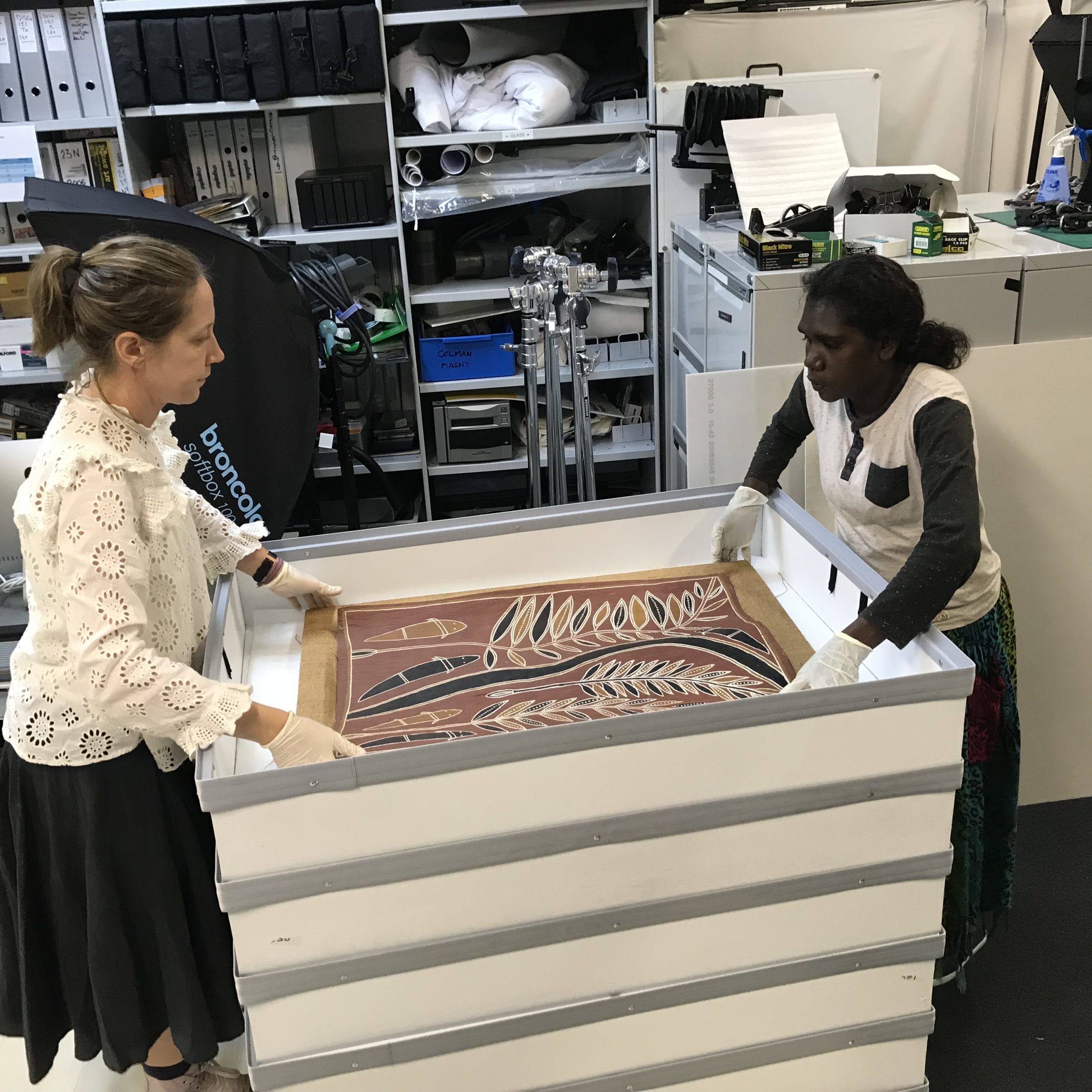First published by Australian Institute for the Conservation of Cultural Material 18 December 2018
Author – Carolyn McLennan, Freelance Conservator, supporting people caring for collections in regional and remote areas of the Northern Territory.
The past two months I’ve been working with the Milingimbi Community preparing 58 bark paintings and 12 objects from their Milingimbi Educational and Cultural Association (MECA) collection for an exhibition Reinvigorating the MECA Collection next March at the Charles Darwin University Gallery.
The MECA Collection is owned by the Milingimbi Community but held at theMuseum and Art Gallery of the Northern Territory (MAGNT) on behalf of the Community. Cultural connections to this collection also include the nearby Ramingining Community where many of the original artists and their descendants moved to from Milingimbi.
The MECA Collection, consisting of over 200 works, was created in the late 1970s bythe Milingimbi Community as an educational and cultural resource. It was housed at the Milingimbi school and used in bilingual education programs, as a reference collection for artists and as evidence in early land and sea claims. It is a significant collection recognised by cultural Elders and an important historic reference to artist and community activities in the mid to late 1970s.
The methodology used for this project was a participatory action research approach. We divided the project into stages and at each stage there was discussion, authorisation, a process of review and recalibration. Leon Milmuru, Jacob Djalangi and Priscilla Gapirrawuy, Milingimbi Arts Workers came to Darwin to work with me on their collection. We shared two ways of caring for bark paintings Yolngu ways and Museum ways. We worked together condition reporting, planning treatments and undertaking treatments of ever increasing complexity.
We streamlined the documentation process and incorporated Yolngu language wherever possible. I had previously assessed the works and staged them from simple treatments to complex. We moved through the treatments, gradually increasing the complexity and building skills and confidence together.
Most of the barks are on hessian covered wooden strainers and it was the Communities request that the barks be retained on them. These were made out at Milingimbi, often with old floor boards. Like many older barks they are well seasoned with few splits or cracks, the condition of the paint varies with powdering or loose pigments but most were still present.
The edges of the barks are surprisingly good and they have only minor planar distortion. Lifting and moving them around was easy on the hessian strainer system. Yes, the hessian is deteriorating, discoloured and shedding but it has protected the works too and provided a supportive hammock as the works lay flat for thirty years. The hessian system does have merit! As for the thirty year rest – well that’s another story.
Photos: Judy Lirrinyin is with her father Binyinyuwuy’s painting of Banumbirr, Morning Star c. 1970s natural pigments on bark 137 x 71cm. Djalangi and Milmurru assessing and working on a painting by Boŋuwuy that is featured in the exhibition.
Judy Lirrinyin with her father Binyinyuwuy’s painting of Banumbirr,
Djalangi assessing a bark painting by Djoni (John) Boŋuwuy
Milmuru and Djalangi assessing bark painting by Djoni (John) Boŋuwuy
Milmuru and Djalangi assessing bark painting by Djoni (John) Boŋuwuy
